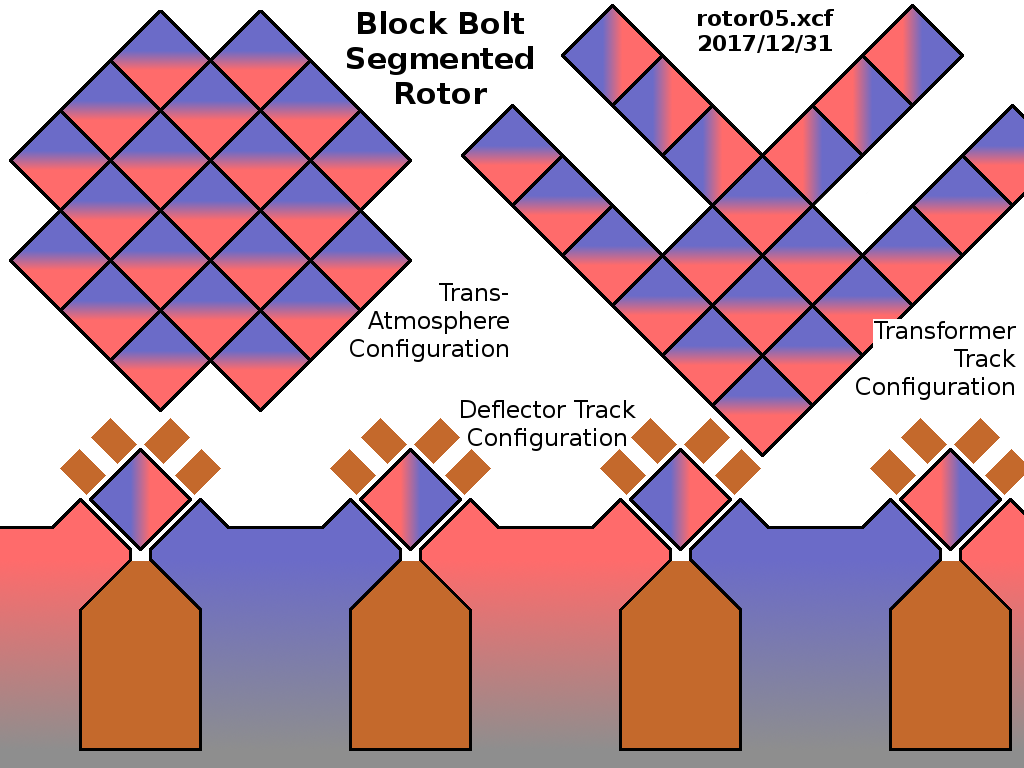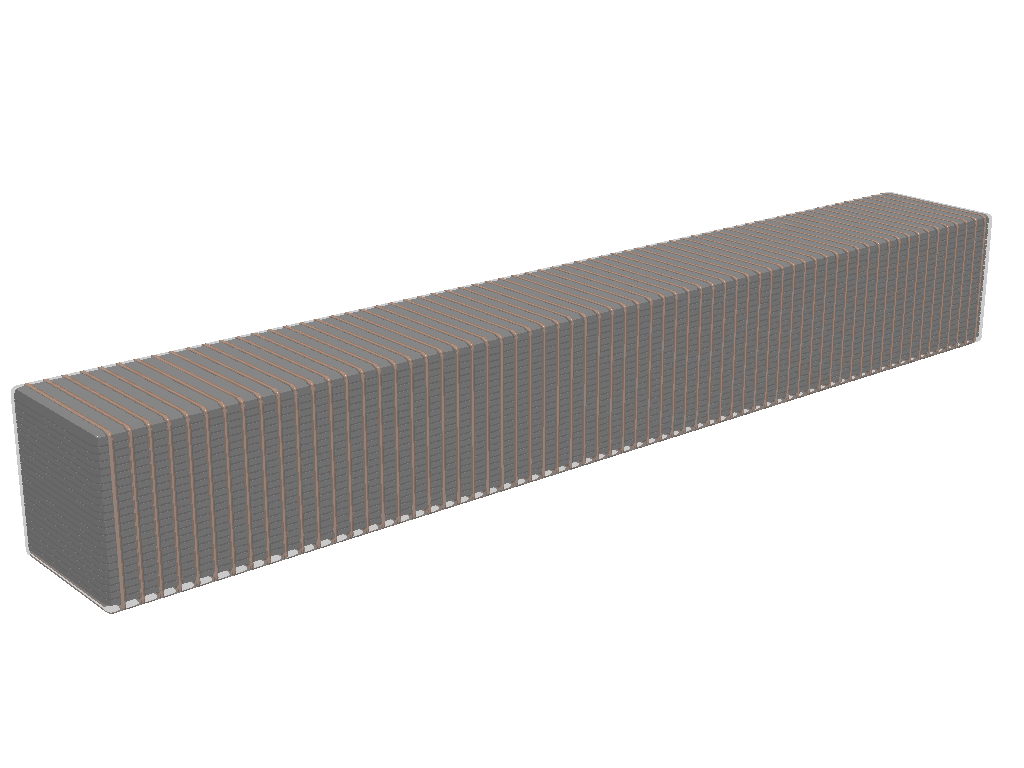|
Size: 493
Comment:
|
Size: 1506
Comment:
|
| Deletions are marked like this. | Additions are marked like this. |
| Line 1: | Line 1: |
| = New Rotor for Launchloop 2.0 = | = New Rotor for Launchloop 2.1 = |
| Line 3: | Line 3: |
| The new rotor will use a Kevlar-stiffened laminated transformer steel rotor and a vertical Kevlar bar with embedded permenent magnets. Kevlar is stronger and stretchier than iron or steel, so expansion joints are not needed to accomodate the stretch caused by the descent from 100 km altitude to the ground. The Kevlar backbone will provide enough stiffness to reduce "waviness", which allows for increased control circuit spacing for the ambit magnets. | || {{attachment:rotor05.png }} || The new rotor is composed of "block bolts", 5 millimeter square, perhaps 10 meter long blocks of laminated transformer steel, wrapped in thin aluminum wire hoop motor windings, and coated with amorphous diamond. [[attachment:rotor05.png | png drawing for download]]|| The bolts are spread out for travel around the high radial acceleration deflector magnets, bunched into a minimum cross section for passage up and down narrow tubes for passage through the turbulent and windy atmosphere, and reshaped into a V (or flat H) configuration to act as a velocity transformer rotor on the acceleration path. The individual streams of bolts are "woven" and "unwoven" as they pass through the system. If there are 21 bolts in parallel, they will follow a "mobius path" so they are positioned in each of the 21 positions consecutively. All bolts are bar-coded, and the outer bolts are microscopically measured with laser-flash-illuminated ultra-high-speed cameras on every passage of each end. Bolts that appear to be damaged are swapped with fresh bolts launched from east return station and accelerated to rotor speed; the damaged bolts are ejected from west return station ... either slowed to fall into the ocean, or launched full speed into Earth escape. {{attachment:Block_bolt3.png }} [[attachment:Block_bolt3.png | png drawing for download ]] [[attachment:Block_bolt3.pov | Povray code for download ]] MoreLater |
New Rotor for Launchloop 2.1
|
The new rotor is composed of "block bolts", 5 millimeter square, perhaps 10 meter long blocks of laminated transformer steel, wrapped in thin aluminum wire hoop motor windings, and coated with amorphous diamond. png drawing for download |
The bolts are spread out for travel around the high radial acceleration deflector magnets, bunched into a minimum cross section for passage up and down narrow tubes for passage through the turbulent and windy atmosphere, and reshaped into a V (or flat H) configuration to act as a velocity transformer rotor on the acceleration path.
The individual streams of bolts are "woven" and "unwoven" as they pass through the system. If there are 21 bolts in parallel, they will follow a "mobius path" so they are positioned in each of the 21 positions consecutively.
All bolts are bar-coded, and the outer bolts are microscopically measured with laser-flash-illuminated ultra-high-speed cameras on every passage of each end. Bolts that appear to be damaged are swapped with fresh bolts launched from east return station and accelerated to rotor speed; the damaged bolts are ejected from west return station ... either slowed to fall into the ocean, or launched full speed into Earth escape.


